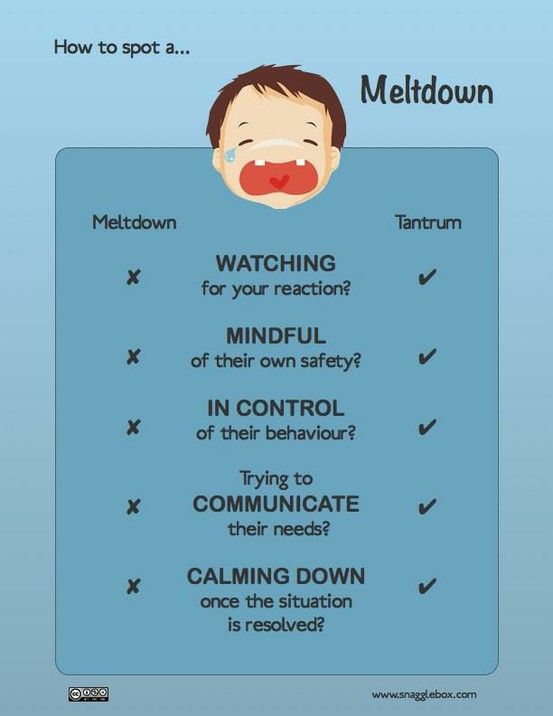How to spot
How to Spot the Bench, Squat, and Dumbbell Press
- Training
Spotting isn't just a question of etiquette; it's how you can help a friend hit a PR and not get injured in the process. Learn the fundamentals and spread the word!
Spotting 101 | Get More Out of Your Spotter | Partner Bodyweight Workout | Partner Arm Workout
It's easy to believe that spotting is just a question of gym etiquette, like wiping down machinery or putting away weights. It's something you know you should do, but never really give much thought.
Lifters who push themselves in the gym know better. To them, knowing when to ask for a spot—and knowing how to spot someone when they ask—is like wearing a seat belt.
It doesn't seem like that big of a deal until you really need it. And if you keep training long enough, you'll have a few stories about someone who needed it.
Here's what you need to know about spotting, and how to do it correctly, for the lifts that require it most often.
Spotting is when one person steps in to actively monitor and (if necessary) help someone while they're lifting fairly close to the limits of their ability. It's something you'll see a good personal trainer doing for their client, but it's also common for training partners. But it's also something that strangers ask one another to do in a commercial weight room.
Simply put, your job as a spotter is to make the lift safe. This might mean simply being present so the lifter feels comfortable lifting, or it might mean something more hands-on, like helping rack and unrack the weight. On occasion, you may be called to help in max-effort reps or during overload work like dropsets or forced reps, like hypertrophy coach Paul Carter outlines in his article, "4 New Ways to Get the Most Out of Your Spotter. "
"
The most common exercises that require a spotter are bench press, back squat, and dumbbell press—both chest and shoulder presses. Each one has some unique needs and challenges, but they all have these elements in common when it comes to being a good spotter:
Spotting Checklist
- Ask how many reps they're planning to perform.
- Ask if they want help unracking or getting the weights into position.
- Pay attention throughout the set.
- Don't help or touch the weights unless it's necessary.
- Seriously: Pay attention!
That's your universal spotting checklist. Now here's what you need to know about each lift.
Spotting the Bench Press
Your browser does not support the video tag.Bench Press Spotting Checklist
- Help "lift off" the bar if needed with your hands inside the lifter's hands.
- Do not touch the bar unless necessary.

- Be prepared to grab the full weight quickly.
- Use a mixed grip, particularly on heavy bars.
- Help re-rack the bar.
Why Spotting is Necessary:
The bench press is the lift where the most people want to "max out" by lifting to the point of muscle failure, but it is also one that involves heavy weight hovering over the torso of the lifter. That's a spicy combo! Sure enough, most of us learn about spotting for the first time when we see someone sprint over to help lift a bar that is crushing someone's vital organs.
How and When to Help: Almost every lifter will ask you to assist with unracking the bar, a move known as a "lift off." To do this, grip the bar with both of your hands close together inside of the lifter's grip. Wait for their cue, then help bring the bar over their chest to the proper starting position. Once the bar is in position, verbally confirm that they are ready for you to let go.
During the set, you may need to keep your hands near the bar, but it is important that you do not touch it—this is not a team lift! A good strategy is to hold your hands in a so-called "mixed grip," with one hand over the bar and one hand under. This grip will be quite strong in the event you need to quickly grab the weight.
This grip will be quite strong in the event you need to quickly grab the weight.
Don't let small joints hold you back on big lifts. Supporting your wrists with wraps can mean a stronger, safer bench on chest day. - View All
If the lifter gets stuck and asks for help, or if the bar starts moving down, assist with full force. It can be hard to tell the difference between normal struggle and true muscle failure, which is why it's crucial to communicate with your lifter. When in doubt, it's better to help—even if you risk making your lifter angry.
Forced Reps: During the set, the lifter might ask you to help with a rep after they reach failure, or what are known as "forced reps." It sounds risky, but it's a time-honored way to boost your bench. In this situation, you only need to give the amount of help needed to complete the lift. There is no need to fully take on all the weight unless it's clearly failing. It's their workout, so allow them to work on each rep as much as they can.
Spotting the Squat
Your browser does not support the video tag.Squat Spotting Checklist
- Be in the spotting position for racking and unracking.
- Support the lifter, not the bar.
- Stay close without interfering.
- If the lifter starts moving down, assist immediately.
Why Spotting is Necessary:
The barbell back squat is one of the heaviest lifts, and one of the most technical, both to perform and to spot. For these reasons, you should always squat in a rack that has pins or "safeties," ensuring they are at the correct height before beginning.
Further complicating matters is that so many different bad things can happen during a heavy squat: a squatter could buckle forward, bust a knee, break an ankle, pass out, or mishandle either unracking or re-racking the weight. As strength coach Charles Staley explains in the article, "7 Ways You're a Serious Workout Injury Waiting to Happen," these incidents can happen with no warning, to experienced lifters as well as newbies.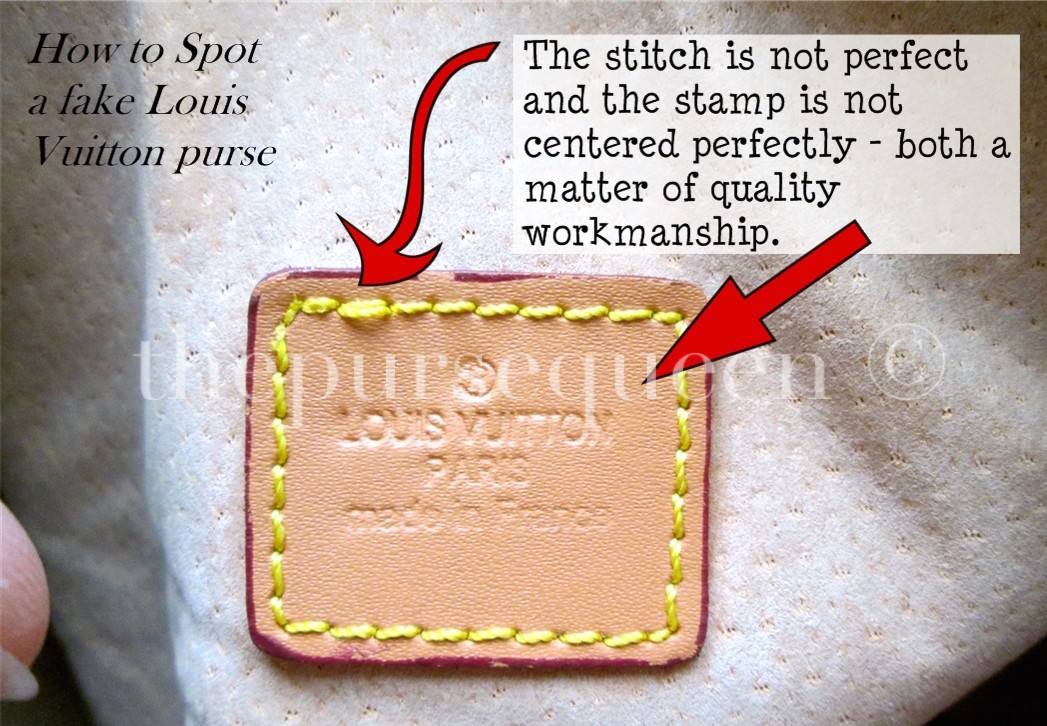
How and When to Help: If the lifter's reps slow down or start looking shaky, tighten up and be ready. If they start moving back down at all after attempting to come up, get in there!
If they're not lifting super-heavy, spotting them by placing your hands on their obliques can be good enough. This can also avoid some potentially awkward situations between male trainers and female clients or vice versa.
However, when serious heavy weights are on the bar, the rules change: Wrap your arms under theirs and across the chest or shoulders, and help them up as much as needed.
Heavy squats play by their own rules. A supportive leather or nylon lifting belt can help you truly challenge your legs, without making your back cry uncle. - View All
Spotting the Dumbbell Press
Your browser does not support the video tag.Dumbbell Press Spotting Checklist
- If asked, help get the dumbbells into position.

- Stand behind the lifter.
- Spot at the wrists, not the elbows!
- Help lower to avoid dropping.
- Take direction from the lifter.
Why Spotting is Necessary:
Dumbbells offer benefits that barbells don't, like extra range of motion and muscle activation. But they also double the threat posed by barbells, since they raise the possibility of two separate weights falling instead of just one. They're also more complicated to get into place, and there's no rack to leave them on at the end of the set. For that reason, it's no wonder that hardcore bodybuilders like Kris Gethin prefer to toss them on the floor at the end of the set while annihilating shoulders or chest.
How and When to Help: For both shoulder and chest presses, the dumbbells start on the knees and the lifter rocks them up into position. As a spotter, you must already be in position behind the lifter to help move and steady the dumbbells into position for the first rep. Once in position, let go and keep your hands off unless help is needed.
Once in position, let go and keep your hands off unless help is needed.
If help is needed, position your hands at the wrists to spot the dumbbell press, not the elbows. Why? Because the lifter's elbows could buckle inward and the spotter would have no way to stop the weight from falling, potentially on the lifter's head or face. Not good!
Like everything in the weight room, spotting gets better with practice. So don't just read this guide! Commit it to heart, then put it into action. Offer to spot someone and also ask someone to spot you. And if you want to get really serious, start lifting with a training partner—it can even be your romantic partner—and try a full-on partner-based lifting program like "Duel: Marc Megna's 6-Week Partner-Based Fitness Plan."
Spotting 101 | Get More Out of Your Spotter | Partner Bodyweight Workout | Partner Arm Workout
About The Author
Heather Eastman, NSCA-CPT
Heather’s mission is to use her passion for fitness and her knowledge of training and nutrition to educate and motivate others to enjoy a healthy and active lifestyle.
View All Articles By This Author
How To Spot Correctly At The Gym
It's easy to mistake spotting as something you do to help your training partner rack the bar or get the correct form.
But it's actually so much more.
The thing is, training on your own is all well and good until something goes wrong. And you won't know how serious the outcome, until it happens.
Spotting isn't there instead of safety bars. Spotting is about helping you avoid potentially life-threatening situations. We all need to push ourselves beyond our limits to improve.
However, reaching that point of muscular failure means your neuromuscular system can no longer produce enough force to overcome a particular weight load. But, when you're training to improve your strength and build muscle, you have to get to this point to progress.
So unless you know how to fail properly, spotting isn't an option - it's a necessity. Especially when training with heavier weight loads.
It doesn't matter whether you're at the Squat Rack, Bench Press or Power Cage, you should always train with someone who knows how to spot. Read on to find out how to spot correctly.
Spotting technique varies depending on what you're doing. And of course, the amount of guidance and support needed varies from person to person.
The key thing is to communicate and make sure you ask the person what they need from you, so that you can get it right.
Before you get started, ask your lifter:
• How much guidance they want from you – too little guidance and you put the person at risk of injury. Too much, and you'll be cheating them out of their hard work.
• How many reps they're planning on doing – this is important for knowing when to expect their point of failure. If they're doing one-rep max, then you'll need to be extra vigilant from the moment they unrack the bar.
We've split out the key points for the main exercises below:
SQUATS
• Arm position – place your arms just underneath their armpit
• Leg position – take a wider stance so you can squat down directly behind them without obstructing their movement
• Following the bar – when the lifter has started squatting, the spotter's hand should be following the squatter but not touching them. The spotter needs to be primed and ready to lift from underneath the armpits to help the squatter up if they fail
The spotter needs to be primed and ready to lift from underneath the armpits to help the squatter up if they fail
• Safety spotters – having safety spotters as a back up is a good idea. Especially if they find they can't get back to a standing position. This way they can bail without being injured
BENCH PRESS
• Hand position – adopt an alternating grip keeping your hands approximately shoulder width apart. Remember not to grab the bar or obstruct the lifter
• Lift off – assist the lifter in taking the bar off the bar rests and placing it over their chest. This helps place the bar in a better position for the lifter and reduces potential shoulder strain, leaving them with more energy to lift
• Checking in – ask your lifter if they're ok and have got the bar in a secure position
• Following the bar – when the lifter has started pressing, the spotter's hand should be following the bar but not touching it
• Re-racking the bar – at the end of the set, ask if they need help racking the bar
SEATED SHOULDER PRESS
• Weight placement – you may need to help your lifter get in position before they start. Check to see if they need your assistance in lifting the dumbbells into a shoulder press position
Check to see if they need your assistance in lifting the dumbbells into a shoulder press position
• Hand position – ask if they lifter wants you to support their wrists or elbows. If they require support at their elbows, place the middle of your palms underneath their elbow. This way, the spotter will be able to push up the lifter starts to struggle. If they need support around their wrists, cuff your hands close to their forearms so you can step in if they need help
• Leg position – if your lifter is shoulder pressing, adopt a wider stance to ensure you're stable
• Follow them – allow your lifter to take the lead and then follow them closely without touching them unless they specifically ask for it. Maintain a small gap of around 2cm. This means if they fail, you can jump in and assist
The most important thing to do is communicate with your lifter so you both know what to expect.And as a final few pieces of advice, here's what not to do:
• Do something the lifter didn't ask you to do – unless they're about to injure themselves.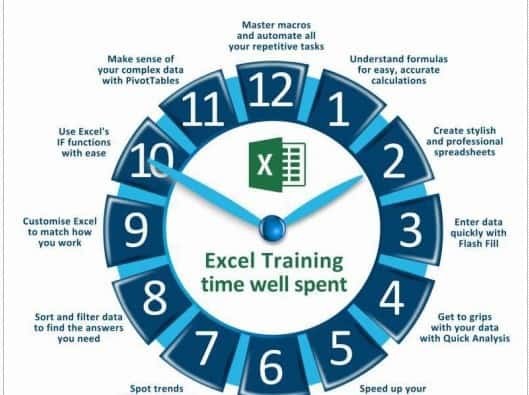 They will probably appreciate the spotter saving them in the long run
They will probably appreciate the spotter saving them in the long run
• Get distracted from spotting. You want to make sure that the lifter isn't struggling and you are there to help them
• Assist on every rep unless they ask for it. This is cheating the lifter out of their reps
For more content, follow us on Instagram @Mirafit Official and on our official Mirafit Facebook page.
Enter your email to signup to our newsletter
Newsletter
Sign Up for Our Newsletter:
Tags: Exercise Type > Strength
Finding your iPad model - Apple Support (UK)
This article describes how to identify your iPad model.
Find your model number
Use your iPad model number to find out which model you are using. There are two ways to find the model number.
- Find the number on the back of your iPad.
- Open the Settings app, tap General, then tap About this device.
 Find the model number at the top. If there is a slash "/" in the number, it is a part number (for example, MY3K2LL/A). Click the SKU to display the model number, which consists of a letter and four numbers without a slash (for example, A2342).
Find the model number at the top. If there is a slash "/" in the number, it is a part number (for example, MY3K2LL/A). Click the SKU to display the model number, which consists of a letter and four numbers without a slash (for example, A2342).
A2436 on 12.9-inch iPad Pro (6th generation)
A2764 on 12.9-inch iPad Pro (6th generation, Wi-Fi + Cellular)
A2437 on 12.9-inch iPad Pro (6th generation) , Wi-Fi + Cellular) with mmWave
A2766 on 12.9-inch iPad Pro (6th Gen, Wi-Fi + Cellular) - China mainland only - Black front panel
- Liquid Retina XDR Display
- Nano-SIM card tray is located on the right side of iPad Pro (Wi-Fi + Cellular)
- Cameras:
Front: Ultra Wide
Rear: Wide, Ultra Wide - LiDAR Scanner
- Face ID Sensor
See iPad Pro 12.9-inch (6th generation) specifications.
iPad Pro (11-inch 4th generation)
- Year: 2022
- Capacity: 128GB, 256GB, 512GB, 1TB, 2TB
- Model number (on case back):
A2759 on iPad Pro 11-inch (4th generation)
A2435 on 11-inch iPad Pro (4th generation Wi-Fi + Cellular)
A2761 on 11-inch iPad Pro (4th generation Wi-Fi + Cellular) with mmWave module
A2762 on 11-inch iPad Pro (4 gen, Wi-Fi + Cellular) - China mainland only - Black front panel
- Liquid Retina Display
- Nano-SIM card tray is located on the right side of iPad Pro (Wi-Fi + Cellular)
- Cameras:
Front: Ultra Wide
Rear: Wide, Ultra Wide - LiDAR Scanner
- Face ID Sensor
See iPad Pro 11-inch (4th generation) specifications.
iPad Pro 12.9" (5th generation)
- Year: 2021
- Capacity: 128GB, 256GB, 512GB, 1TB, 2TB
- Model number (on case back):
A2378 on iPad Pro
A2461 on iPad Pro (Wi-Fi + Cellular)
A2379 on iPad Pro (Wi-Fi + Cellular) with mmWave module - A2462 on iPad Pro (Wi-Fi + Cellular) - Mainland China only
- Black front panel
- Liquid Retina XDR Display
- Nano-SIM card tray is located on the right side of iPad Pro (Wi-Fi + Cellular)
- TrueDepth Front Camera, Wide Camera, Ultra Wide Camera
- LiDAR Scanner
- Face ID Sensor
See iPad Pro 12.9-inch (5th generation) specifications.
iPad Pro 11" (3rd generation)
- Year: 2021
- Capacity: 128GB, 256GB, 512GB, 1TB, 2TB
- Model number (on case back):
A2377 on iPad Pro
A2459 on iPad Pro (Wi-Fi + Cellular)
A2301 on iPad Pro (Wi-Fi + Cellular) with mmWave module
A2460 on iPad Pro (Wi-Fi) Fi + Cellular) - China mainland only - Black front panel
- Liquid Retina Display
- Nano-SIM card tray is located on the right side of iPad Pro (Wi-Fi + Cellular)
- TrueDepth Front Camera, Wide Camera, Ultra Wide Camera
- LiDAR Scanner
- Face ID Sensor
See iPad Pro 11-inch (3rd generation) specifications.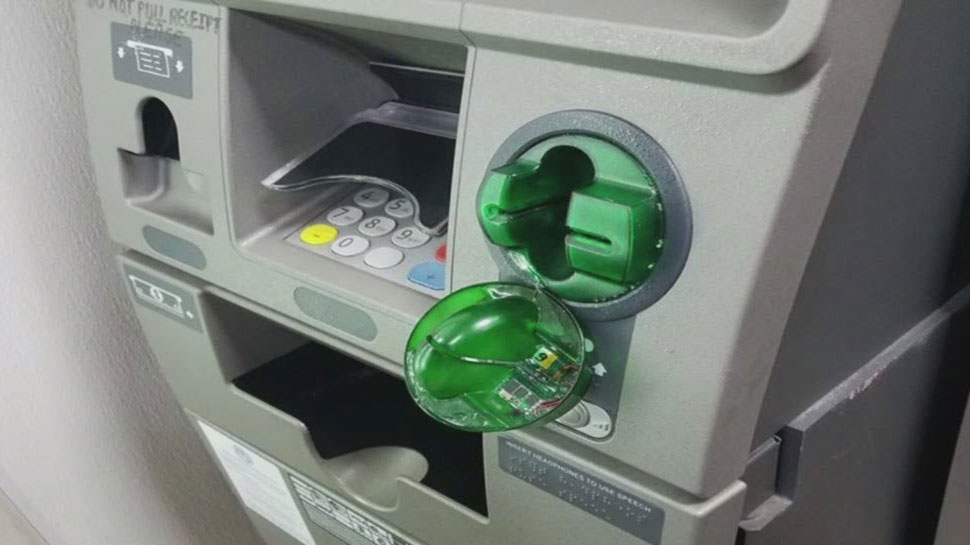
iPad Pro 12.9" (4th generation)
- Year: 2020
- Memory capacity: 128 GB, 256 GB, 512 GB, 1 TB
- Model number (on case back):
A2229 on iPad Pro
A2069 and A2232 on iPad Pro (Wi-Fi + Cellular)
A2233 on iPad Pro (Wi-Fi + Cellular) - Mainland China only - Black front panel
- Nano-SIM card tray is located on the right side of iPad Pro (Wi-Fi + Cellular)
- TrueDepth Front Camera, Wide Camera, Ultra Wide Camera
- LiDAR Scanner
- Face ID Sensor
See iPad Pro 12.9-inch (4th generation) specifications.
iPad Pro 11" (2nd generation)
- Year: 2020
- Memory capacity: 128 GB, 256 GB, 512 GB, 1 TB
- Model number (on case back):
A2228 on iPad Pro
A2068 and A2230 on iPad Pro (Wi-Fi + Cellular)
A2231 on iPad Pro (Wi-Fi + Cellular) - Mainland China only - Black front panel
- Nano-SIM card tray is located on the right side of iPad Pro (Wi-Fi + Cellular)
- TrueDepth Front Camera, Wide Camera, Ultra Wide Camera
- LiDAR Scanner
- Face ID Sensor
See iPad Pro 11-inch (2nd generation) specifications.
iPad Pro 12.9" (3rd generation)
- Year: 2018
- Capacity: 64 GB, 256 GB, 512 GB and 1 TB
- Model number (on case back):
A1876 on iPad Pro
A2014 and A1895 on iPad Pro (Wi-Fi + Cellular)
A1983 on iPad Pro (Wi-Fi + Cellular) - Mainland China only - Black front panel
- Nano-SIM card tray is located on the right side of iPad Pro (Wi-Fi + Cellular)
- TrueDepth front camera and rear camera
- Face ID Sensor
See iPad Pro 12.9-inch (3rd generation) specifications.
iPad Pro 11"
- Year: 2018
- Capacity: 64 GB, 256 GB, 512 GB and 1 TB
- Model number (on case back):
A1980 on iPad Pro
A2013 and A1934 on iPad Pro (Wi-Fi + Cellular)
A1979 on iPad Pro (Wi-Fi + Cellular) - Mainland China only - Black front panel
- Nano-SIM card tray is located on the right side of iPad Pro (Wi-Fi + Cellular)
- TrueDepth front camera and rear camera
- Face ID Sensor
See iPad Pro 11-inch specifications.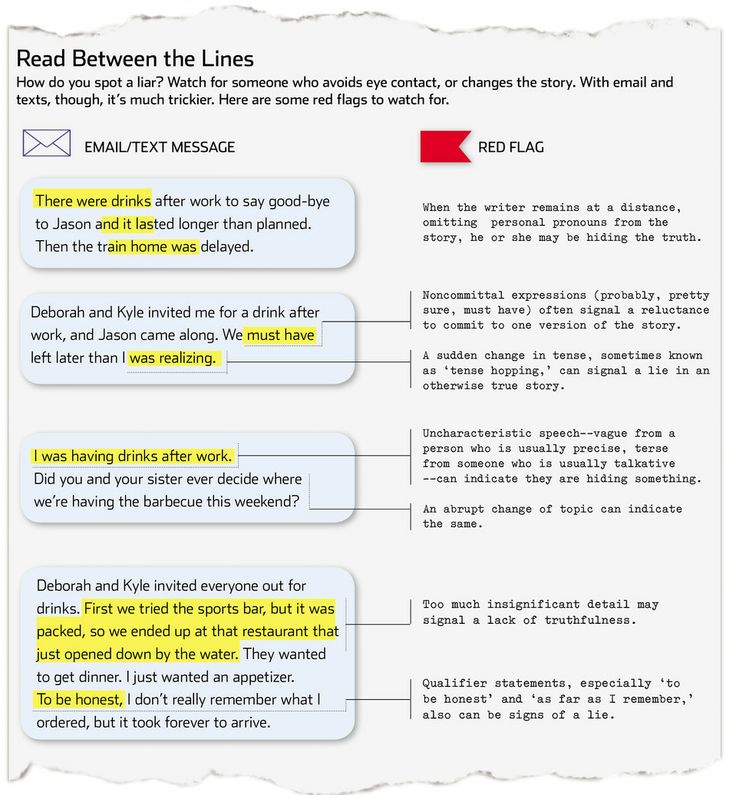
iPad Pro (12.9" 2nd generation)
- Year: 2017
- Capacity: 64 GB, 256 GB and 512 GB
- Model number (on case back):
A1670 on iPad Pro
A1671 on iPad Pro (Wi-Fi + Cellular)
A1821 on iPad Pro (Wi-Fi + Cellular) - Mainland China only - White or black front panel
- Nano-SIM card tray is located on the right side of iPad Pro (Wi-Fi + Cellular)
- FaceTime HD Camera and iSight Flash Camera*
- Touch ID sensor in the Home button
See iPad Pro 12.9-inch (2nd generation) specifications.
iPad Pro (10.5")
- Year: 2017
- Capacity: 64 GB, 256 GB and 512 GB
- Model number (on case back):
A1701 on iPad Pro
A1709 on iPad Pro (Wi-Fi + Cellular)
A1852 on iPad Pro (Wi-Fi + Cellular) - Mainland China only - White or black front panel
- Nano-SIM card tray is located on the right side of iPad Pro (Wi-Fi + Cellular)
- FaceTime HD Camera and iSight Flash Camera*
- Touch ID sensor in the Home button
See iPad Pro (10. 5-inch) specifications.
5-inch) specifications.
iPad Pro (9.7")
- Year: 2016
- Capacity: 32 GB, 128 GB and 256 GB
- Model number (on case back):
A1673 on iPad Pro
A1674 or A1675 on iPad Pro (Wi-Fi + Cellular)
- White or black front panel
- Nano-SIM card tray is located on the right side of iPad Pro (Wi-Fi + Cellular)
- FaceTime HD Camera and iSight Flash Camera*
- Touch ID sensor in the Home button
See iPad Pro (9.7-inch) specifications.
iPad Pro (12.9")
- Year: 2015
- Capacity: 32 GB, 128 GB and 256 GB
- Model number (on case back):
A1584 on iPad Pro
A1652 on iPad Pro (Wi-Fi + Cellular) - White or black front panel
- Nano-SIM card tray is located on the right side of iPad Pro (Wi-Fi + Cellular)
- FaceTime HD Camera and iSight Camera*
- Touch ID sensor in the Home button
See iPad Pro (12.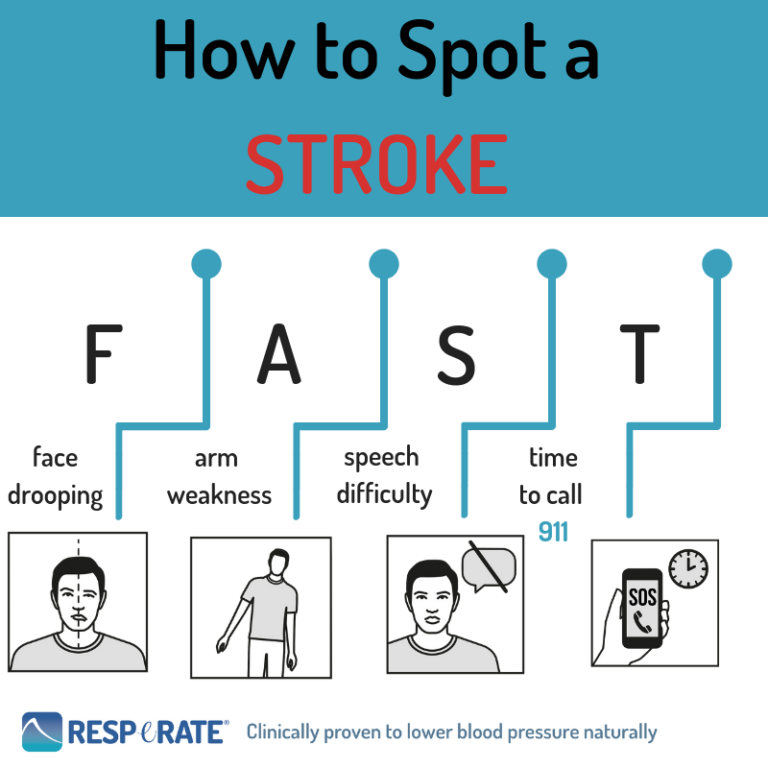 9-inch) specifications.
9-inch) specifications.
iPad Air (5th generation)
- Year: 2022
- Capacity: 64 GB and 256 GB
- Model number (on the back of the case):
A2588 on iPad Air (5th generation)
A2589, A2591 on iPad Air (5th generation Wi-Fi + Cellular) - Nano-SIM card tray is located on the right side of iPad Air (5th generation Wi-Fi + Cellular)
- FaceTime HD Camera, Rear Wide Camera*
- Touch ID sensor in top button
See iPad Air (5th generation) specifications.
iPad Air (4th generation)
- Year: 2020
- Capacity: 64 GB and 256 GB
- Model number (on the back of the case):
A2316 on iPad Air (4th generation)
A2324, A2325, A2072 on iPad Air (4th generation) Wi-Fi + Cellular - Nano-SIM card tray is on the right side of iPad Air (4th generation) Wi-Fi + Cellular
- FaceTime HD Camera, Rear Wide Camera*
- Touch ID sensor in top button
See iPad Air (4th generation) specifications.
iPad Air (3rd generation)
- Year: 2019
- Capacity: 64 GB and 256 GB
- Model number (on the back of the case):
A2152 on iPad Air (3rd generation)
A2123 and A2153 on iPad Air (3rd generation Wi-Fi + Cellular)
A2154 on iPad Air (3rd generation) , Wi-Fi + Cellular) - China mainland only - Nano-SIM card tray is located on the right side of iPad Air (3rd generation Wi-Fi + Cellular)
- FaceTime HD Camera, Rear Wide Camera*
- Touch ID sensor in the Home button
See iPad Air (3rd generation) specifications.
iPad Air 2
- Year: late 2014
- Capacity: 16 GB, 32 GB, 64 GB and 128 GB
- Model number (on case back):
A1566 on iPad Air 2
A1567 on iPad Air 2 (Wi-Fi + Cellular) - White or black front panel
- Nano-SIM card tray is located on the right side of iPad Air 2 (Wi-Fi + Cellular)
- FaceTime HD Camera, Rear Wide Camera*
- Touch ID sensor in the Home button
See iPad Air 2 specifications.
A1474 on iPad Air (Wi-Fi)
A1475 on iPad Air (Wi-Fi + Cellular)
A1476 on iPad Air (Wi-Fi + Cellular, TD-LTE) - released early 2014
See iPad Air specifications.
iPad mini (6th generation)
- Year: 2021
- Capacity: 64 GB and 256 GB
- Model number (on the back of the case):
A2567 on iPad mini (6th generation)
A2568 on iPad mini (6th generation Wi-Fi + Cellular)
A2569 on iPad mini (6th generation Wi-Fi -Fi + Cellular) - China mainland only - Nano-SIM card tray is located on the right side of iPad mini (6th generation Wi-Fi + Cellular)
- Rear camera with flash
- Touch ID sensor in Touch ID button
See iPad mini (6th generation) specifications.
iPad mini (5th generation)
- Year: 2019
- Capacity: 64 GB and 256 GB
- Model number (on the back of the case):
A2133 on iPad mini (5th generation)
A2124 and A2126 on iPad mini (5th generation Wi-Fi + Cellular)
A2125 on iPad mini (5th generation) , Wi-Fi + Cellular) - China mainland only - Nano-SIM card tray is located on the right side of iPad mini (5th generation Wi-Fi + Cellular)
- Touch ID sensor in the Home button
See iPad mini (5th generation) specifications.
iPad mini 4
- Year: Late 2015
- Capacity: 16 GB, 32 GB, 64 GB and 128 GB
- Model number (on case back):
A1538 on iPad mini 4
A1550 on iPad mini 4 (Wi-Fi + Cellular) - White or black front panel
- Nano-SIM card tray is located on the right side of iPad mini 4 (Wi-Fi + Cellular)
- FaceTime HD Camera and iSight Camera*
- Touch ID sensor in the Home button
See iPad mini 4 specifications.
A1599 on iPad mini 3
A1600 on iPad mini 3 (Wi-Fi + Cellular)
See iPad mini 3 specifications.
iPad mini 2
- Year of manufacture: late 2013 and early 2014
- Capacity: 16 GB, 32 GB, 64 GB and 128 GB
- Model number (on case back):
A1489 on iPad mini 2 (Wi-Fi)
A1490 on iPad mini 2 (Wi-Fi + Cellular)
A1491 on iPad mini 2 (Wi-Fi + Cellular, TD-LTE ) - released in early 2014
- White or black front panel
- Nano-SIM card tray located on the left side of iPad mini 2 (Wi-Fi + Cellular) with Retina display
- FaceTime HD Camera and iSight Camera*
See iPad mini 2 specifications.
A1432 on iPad mini (Wi-Fi)
A1454 on iPad mini (Wi-Fi + Cellular)
A1455 on iPad mini (Wi-Fi + Cellular, MM)
See iPad mini specifications.
iPad (10th generation)
- Year: 2022
- Capacity: 64 GB, 256 GB
- Model numbers (on case back):
A2696 on iPad (10th generation)
A2757 on iPad (10th generation Wi-Fi + Cellular)
A2777 on iPad (10th generation Wi-Fi + Cellular) - Mainland China only - Black front panel
- Nano-SIM card tray located on the right side of iPad (10th generation, Wi-Fi + Cellular)
- Cameras:
Front: Ultra wide on long side
Rear: Wide - Touch ID sensor in top button
See iPad (10th generation) specifications.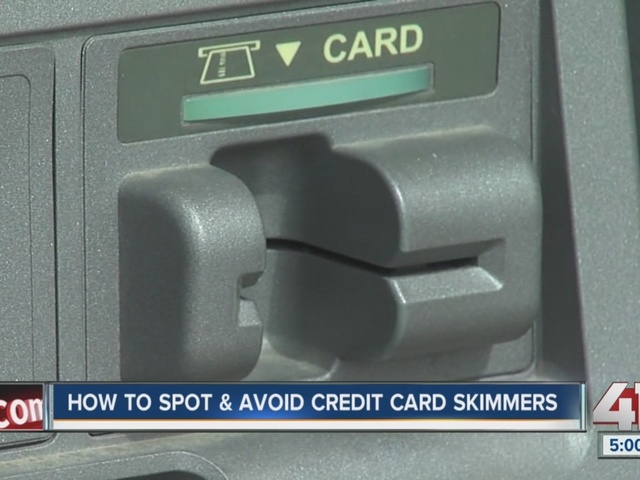
iPad (9th generation)
- Year: 2021
- Capacity: 64 GB and 256 GB
- Model numbers (on case back):
A2602 on iPad (9th generation)
A2604 on iPad (9th generation Wi-Fi + Cellular)
A2603 on iPad (9th generation Wi-Fi + Cellular) - North America only
A2605 on iPad (9th Gen Wi-Fi + Cellular) - China mainland only - Black front panel
- Nano-SIM card tray is on the right side of iPad (9th generation) Wi-Fi + Cellular
- Front ultra wide camera
- Rear wide camera
- Touch ID sensor in the Home button
See iPad (9th generation) specifications.
iPad (8th generation)
- Year: 2020
- Capacity: 32 and 128 GB
- Model numbers (on case back):
- A2270 on iPad (8th generation)
- A2428, A2429 and A2430 on iPad (8th Gen Wi-Fi + Cellular)
- White or black front panel
- Nano-SIM card tray is located on the right side of iPad (8th generation Wi-Fi + Cellular)
- FaceTime HD camera and rear camera
- Touch ID sensor in the Home button
See iPad (8th generation) specifications.
iPad (7th generation)
- Year: 2019
- Capacity: 32 GB and 128 GB
- Model number (on case back):
- A2197 on iPad (7th generation Wi-Fi)
- A2200, A2198 on iPad (7th Gen Wi-Fi + Cellular)
- White or black front panel
- Nano-SIM card tray is located on the right side of iPad (7th generation Wi-Fi + Cellular)
- FaceTime HD camera and rear camera*
- Touch ID sensor in the Home button
See iPad (7th generation) specifications.
iPad (6th generation)
- Year: 2018
- Capacity: 32 GB and 128 GB
- Model number (on case back):
- A1893 on iPad (6th generation Wi-Fi)
- A1954 on iPad (6th Gen Wi-Fi + Cellular)
- White or black front panel
- Nano-SIM card tray is located on the right side of iPad (6th generation Wi-Fi + Cellular)
- FaceTime HD camera and rear camera*
- Touch ID sensor in the Home button
See iPad (6th generation) specifications.
iPad (5th generation)
- Year: 2017
- Capacity: 32 and 128 GB
- Model number (on case back):
- A1822 on iPad (5th generation, Wi-Fi)
- A1823 on iPad (5th Gen Wi-Fi + Cellular)
- White or black front panel
- Nano-SIM card tray is located on the right side of iPad (5th generation Wi-Fi + Cellular)
- FaceTime HD camera and rear camera*
- Touch ID sensor in the Home button
See iPad (5th generation) specifications.
iPad (4th generation)
- Year: late 2012
- Capacity: 16 GB, 32 GB, 64 GB and 128 GB
- Model number (on case back):
A1458 on iPad (4th generation, Wi-Fi)
A1459 on iPad (4th generation, Wi-Fi + Cellular)
A1460 on iPad (4th generation, Wi-Fi) Wi-Fi + Cellular, MM)
- White or black front panel
- Micro-SIM card tray located on the right side of iPad (4th generation Wi-Fi + Cellular)
- FaceTime HD Camera and iSight Camera*
See iPad (4th generation) specifications.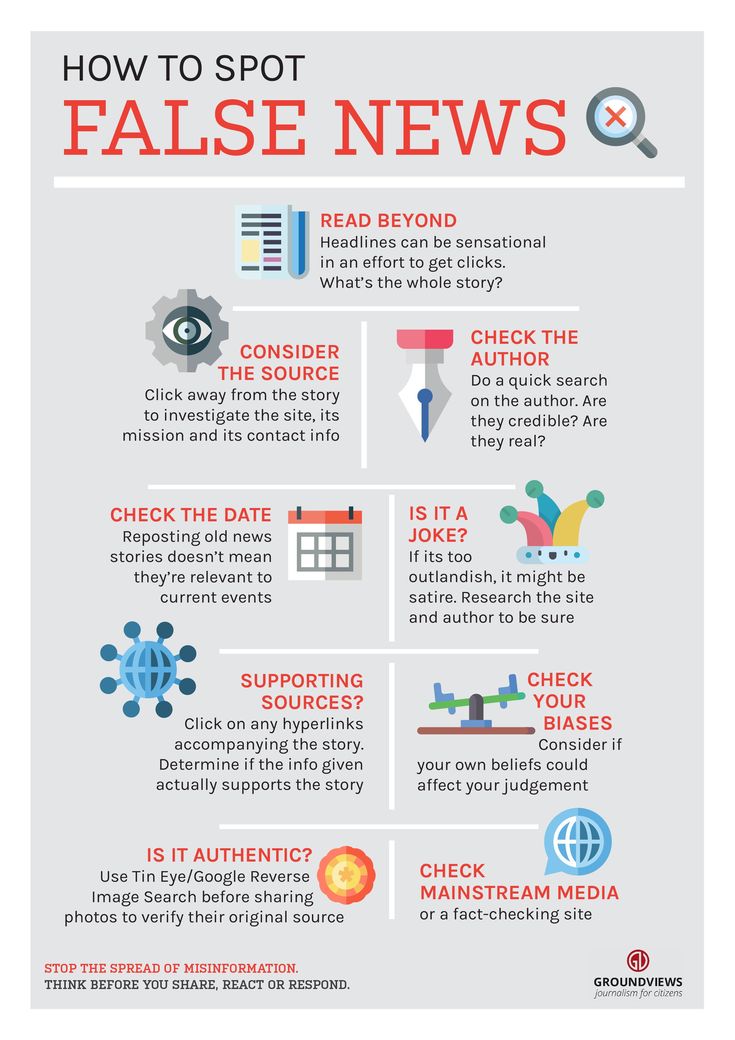
iPad (3rd generation)
- Year: Early 2012
- Capacity: 16 GB, 32 GB and 64 GB
- Model number (on case back):
A1416 on iPad (3rd generation, Wi-Fi)
A1430 on iPad (3rd generation, Wi-Fi + Cellular)
A1403 on iPad (3rd generation, Wi-Fi + Cellular, VZ)
- White or black front panel
- Micro-SIM card tray located on the right side of iPad (3rd generation Wi-Fi + Cellular)
- FaceTime and iSight cameras*
See iPad (3rd generation) specifications.
iPad 2
- Year: 2011
- Capacity: 16 GB, 32 GB and 64 GB
- Model number (on case back):
A1395 on iPad 2 (Wi-Fi)
A1396 on iPad 2 (GSM model)
A1397 on iPad 2 (CDMA model)
- White or black front panel
- The micro-SIM card tray is located on the right side of the iPad (GSM model only)
- FaceTime camera and rear camera*
See iPad 2 specifications.
iPad
- Capacity: 16 GB, 32 GB and 64 GB
- Model number (on case back):
A1219 on iPad (Wi-Fi)
A1337 on iPad (Wi-Fi + 3G) - Black front panel
- Standard SIM tray for iPad (Wi-Fi + 3G)
See iPad specifications.
* FaceTime is not available in all countries/regions.
Publication date:
Identifying your AirPods model - Apple Support (UK)
Learn how to identify your AirPods generation by model number and charging case model.
Find your model number
The AirPods model number can identify the generation of your AirPods.
Search in Settings
- Go to Settings > Bluetooth. Or go to Settings > [Your AirPods]*.
- Find AirPods in the list (for example, "Ivan's AirPods").
- Tap the Details button next to AirPods and the model number will be displayed.
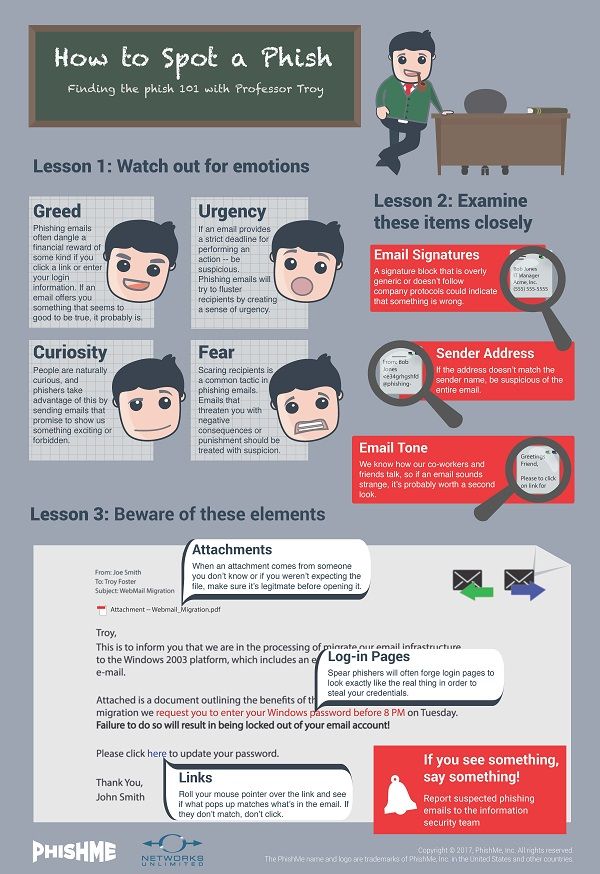
* If your device is running an OS other than iOS 14 or iPadOS 14 or later and AirPods are connected to the device, you can find the model number in Settings > General > About This Device ". Scroll down the page until you see the AirPods name, then tap the name.
Search on your AirPods
If you can't find the model in Settings, you can find the model number on your AirPods. The model number is located in the first line of text on the back of each AirPods or under the left ear cushion of AirPods Max.
Identifying the generation of AirPods by model number
You can now identify the generation of AirPods by model number.
AirPods Pro (2nd generation)
Model number: A2931, A2699, A2698
Release: 2022
AirPods (3rd generation)
Model number: A2565, A2564
release year: 2021
AIRPODS MAX 9000
Room
: 2020
Airpods Pro
Model number: A2084, A2083
release year: 2019
AirPods (2nd generation)
Model number: A2032, A2031
year of release: 2019
AIRPODS (1st generation)
Model number: A1523, A1722
Year: 2017
Charging Case Model Identification
The AirPods charging case model can be identified by the location of the status light and other details.
MagSafe Charging Case for AirPods Pro (2nd Generation)
Model Number: A2700
Year: 2022
MagSafe Charging Case for AirPods (2nd Generation) is compatible with wireless chargers and can level Qi position using magnets when using MagSafe compatible chargers. At the bottom of the case is a Lightning connector for plug-in charging. There is also an external speaker at the bottom of the case to indicate charging and battery status, and a strap loop on the side. The status indicator is on the front of the case, and the serial number is on the back of the lid.
Lightning Charging Case for AirPods (3rd Gen)
Model Number: A2897
Year of Manufacture: 2022
The bottom of the case has a Lightning connector for plug-in charging. The status indicator is on the front of the case, and the serial number is on the back of the lid.
MagSafe Charging Case for AirPods (3rd Gen)
Model Number: A2566
Year: 2021
The MagSafe Charging Case for AirPods (3rd Gen) is compatible with Qi wireless chargers and can magnetically align when using MagSafe compatible chargers.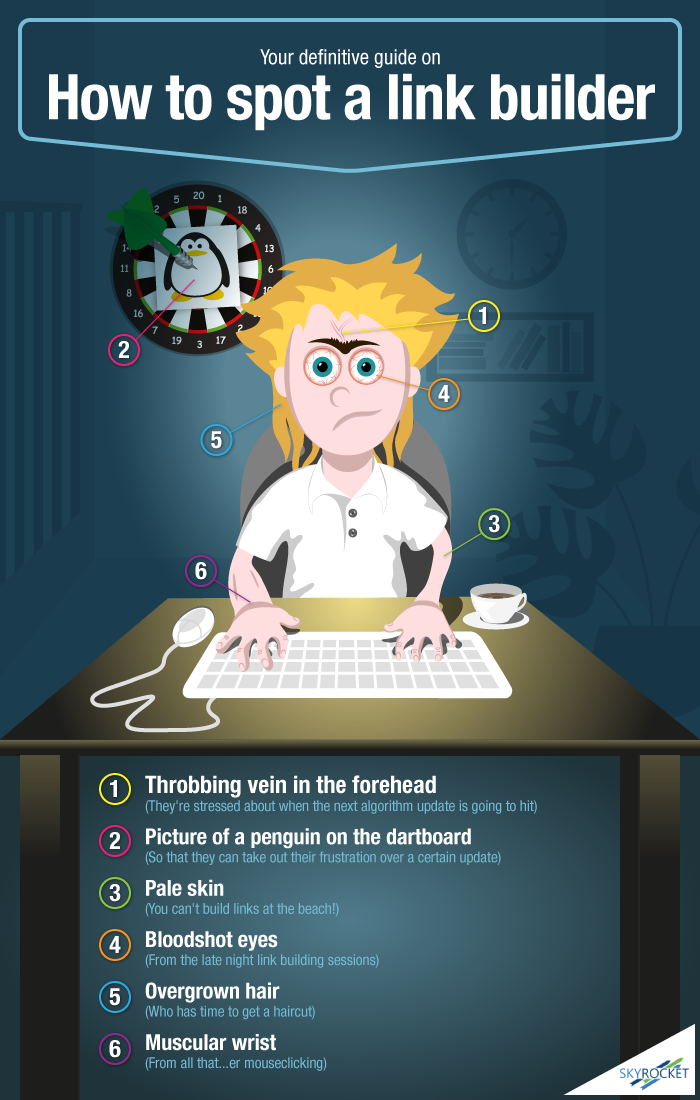 At the bottom of the case is a Lightning connector for plug-in charging. The status indicator is on the front of the case, and the serial number is on the back of the lid.
At the bottom of the case is a Lightning connector for plug-in charging. The status indicator is on the front of the case, and the serial number is on the back of the lid.
MagSafe Charging Case for AirPods Pro
Model Number: A2190
Year: 2021
The MagSafe Charging Case for AirPods Pro is compatible with Qi wireless chargers and can magnetically align when using MagSafe compatible chargers. At the bottom of the case is a Lightning connector for plug-in charging. The status indicator is on the front of the case, and the serial number is on the back of the lid. Last four digits of the serial number: 1059or 1NRC.
AirPods Pro Charging Case
Model Number: A2190
Year: 2019
AirPods Pro Compatible At the bottom of the case is a Lightning connector for plug-in charging. The status indicator is on the front of the case, and the serial number is on the back of the lid. Last four digits of the serial number: 0C6L or LKKT
Wireless Charging Case
Model Number: A1938
Year: 2019
Compatible with AirPods (2nd generation) and AirPods (1st generation)
Wireless Charger Standard Qi.
